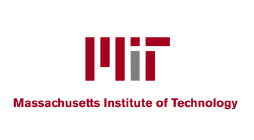Shuguang Zhang current research focuses on designs of proteins and peptides. He won a 2006 Guggenheim Fellowship and spent academic sabbatical in University of Cambridge. He won 2006 Wilhelm Exner Medal of Austria. He was elected to Austrian Academy of Sciences in 2010. He was elected to American Institute of Medical and Biological Engineering in 2011 and elected to US National Academy of Inventors in 2013, and elected to the European Academy of Science and Arts in 2021. He won the 2020 Emil Thomas Kaiser Award from the Protein Society. He is also a board member of Molecular Frontiers Foundation. Molecular Frontiers Foundation organizes annually Molecular Frontiers Symposia in Sweden and around the world. The Foundation encourages young people to ask big and good scientific questions about nature. The selected winners will be awarded for Molecular Frontiers Inquiry Prize.
References
Zhang, S. et al. (2018) QTY code enables design of detergent-free chemokine receptors that retain ligand-binding activities. Proc. Natl. Acad. Sci. USA 115 (37) E8652-E8659. PMID: 30154163
Zhang, S. & Egli, M. (2022) Hiding in plain sight: three chemically distinct α-helix types. Quarterly Review of Biophysics (QRB) 55, e7. PMID:35722863
Qing, R., et al. (2023) Scalable biomimetic sensing system with membrane receptor dual-monolayer probe and graphene transistor arrays. Science Advances 9(29):eadf1402. PMID: 37478177.
Li, M. et al (2024) Design of a water-soluble transmembrane receptor kinase with intact molecular function by QTY code. Nature Communications 15(1), 4293. PMID: 38858360.
Sun CF, et al. (2025) Water-soluble CXCR4QTY molecular trap inhibits cancer metastasis. Cell-Chemical Biology (Under revision).







